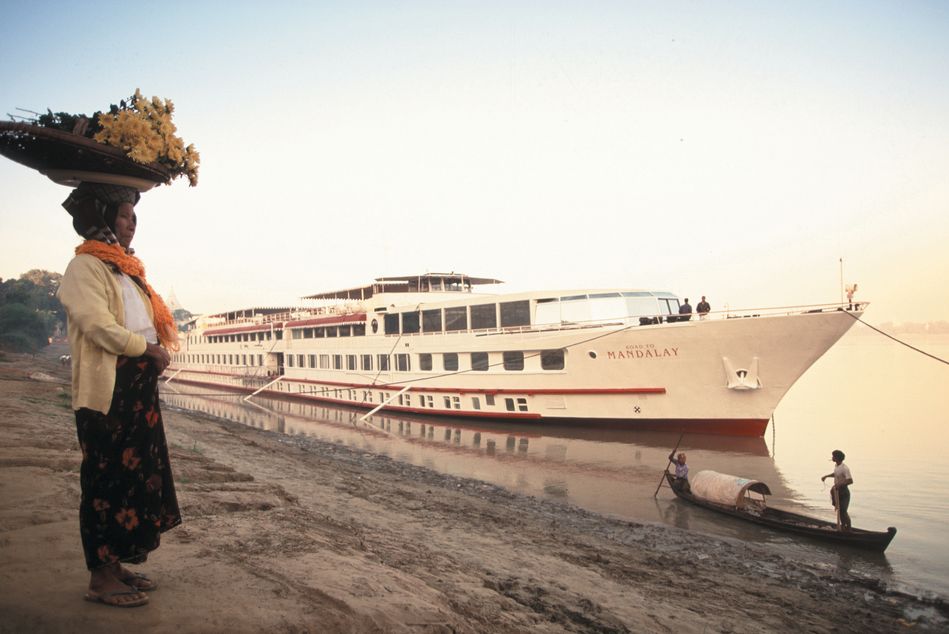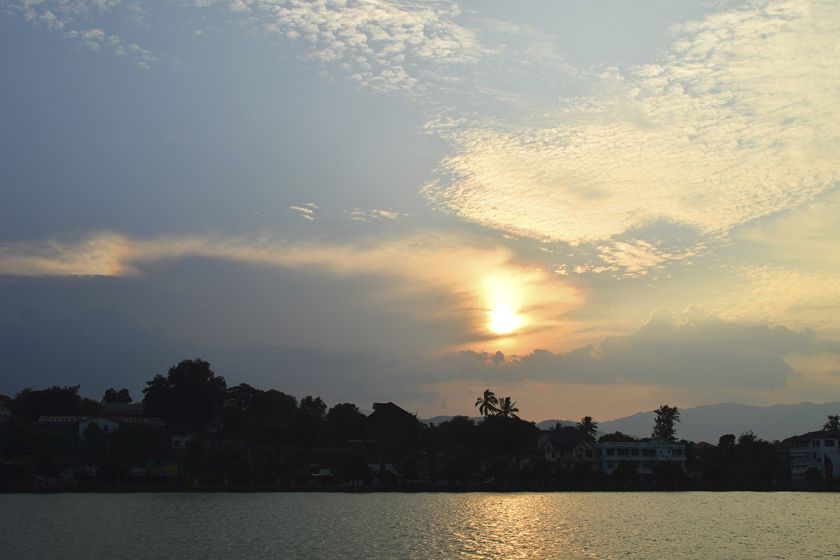A guide to when to go, what to see and where to stay in Myanmar
As a country that routinely appears at the top of many people’s bucket lists, Myanmar, as it’s more recently known, has been making waves on the travel scene for some time, attracting a stream of adventurous travellers to its mysterious shores in ever increasing numbers, keen to explore and experience the culture, history and outstanding natural beauty of one of the world’s most exciting destinations.
From shimmering, gilded temples and centuries-old pagodas to beautiful, sun-blessed beaches and the towering peaks of the Himalaya, the country possesses a continent’s worth of experiences within its borders. This is a land unchanged by the modern world, a country that has seen little in the way of development since the last throes of British colonialism in the late 1940s.
Around 70 percent of the country’s population of more than 56 million is made up of Burmese, with the remainder coming from more than 100 ethnic minority groups. Its this diversity of cultures, costumes and cuisines that makes Myanmar such a fascinating country to visit, with each group adding something unique to the rich tapestry of life that characterises this most enigmatic of destinations.
At a glance
- Capital: Yangon (Rangoon)
- Flight time: Around 14 hours and usually via Bangkok, Thailand
- Currency: Burmese Kyat
- Read: Freedom from Fear and other writings by Aung San Suu Kyi
- Eat: Mohinga – Myanmar’s national dish is a flavorsome and sometimes fiery fish noodle soup
- Drink: Tea is the preferred drink among locals, with both green and black tea drunk throughout the country, sometimes diluted with a dash of sweet condensed milk.
When to go
The best time of the year to visit Myanmar is during the dry season, between the months of November and February, when rainfall is at it’s lowest and the temperature is just about perfect. From March to the end of May the heat slowly builds, reaching temperatures of more than 40 degrees Celsius by the early part of June, and for those that can stand the heat, the country will be quieter at this time. From June to October, the southwest monsoon hits and many roads become impassable, although its still possible to explore Myanmar’s more developed regions.

Getting there and around
The simplest, most convenient way to travel around Myanmar is to fly. The distances are huge and in more remote areas the road conditions are not the best, making overland travel a tricky proposition in certain regions. Flying however is not without its pitfalls. Several of the airlines plying their trade on Myanmar’s domestic network have affiliations with the government and are best avoided, although the level of affiliation is often hard to determine. Schedules and departures can be unreliable at best, so it’s always wise to seek the advice of a travel specialist before making any bookings.
For shorter journeys, travelling by road allows you to enjoy the outstanding landscapes for which the country is renowned, as well as the chance to spend more time with the wonderful Burmese people.
Where to go
Burma has an incredible array of exciting and diverse options for travelers. From ancient the ancient temples and pagodas of Pagan to majestic snow-capped peaks of the Himalayas, we’ve highlighted our favorite, must-see spots as well as some essential, must-do experiences.
Yangon

With a population of more than five million people, the capital Yangon – or Rangoon as it was previously known as – is Myanmar’s largest city and most important commercial hub. Yangon is renowned for its gilded pagodas and elaborate temples, which are found dotted throughout the city. The influence of Buddhism is clear to see, and it’s the capital’s sparkling, sacred monuments and saffron-robed monks, which form the centerpiece of most visitors Rangoon experience. Shwedagon Pagoda is the most impressive of these temples; a glistening, golden dome, built more than 2,500 years ago, which seems to dominate the city skyline at almost every turn.
Other attractions in the capital include the lush, verdant greenery of Kandawgyi Park, which provides a welcome retreat from the heat and chaos of the city as well as some pleasant walks around the park’s peaceful tree-lined lake.
No visit to Yangon would be complete without a visit to bustling Bogyoke Aung San Market. Housed in a colonial-style building with a grand stone entrance and a maze of cobbled, stall-lined streets, it’s the perfect spot to try your hand at some haggling and makes a great place to people watch. You’ll find everything here from regional antiques and local artworks to jewellery and traditional handicrafts. Try and fit in a visit towards the end of your trip; it’s one of the best places in Myanmar to pick up a few souvenirs and gifts for family and friends back home.
Other attractions worth considering are the colourful, vibrant neighbourhoods of China Town and Little India, where you’ll discover lively street stalls and some of the city’s best food.
Half a day’s drive from Yangon, the iconic Golden Rock is one of Myanmar’s most sacred sites. Perched precariously on the edge of a cliff and covered entirely in gold leaf, legend has it that the Golden Rock is held in place by a single strand of the Buddha’s hair and attracts pilgrims and visitors from across Myanmar and beyond.
Where to stay in Yangon
Belmond Governor’s Residence

Built in the 1920s, the Belmond Governor’s Residence enjoys a prime location in the verdant Embassy Quarter in the heart of the capital. With just 48 luxuriously appointed rooms, the hotel retains an intimate ambience, reflecting the colonial era from which it was conceived; a true oasis in the heart of the city.
Bagan

The ancient city of Bagan, which served as Myanmar’s capital between the 11th and 13th centuries, is one of Myanmar’s most breathtaking sites. In the early morning light, Bagan’s four thousand stone pagodas – most of which remain largely intact – rise up from the arid plains on the banks of the Irrawaddy River like a ghostly apparition, an ethereal vision that’s sure to remain long in the memory of those fortunate enough to witness it. Spend your days exploring the myriad of temples and pagodas, including the spectacular Ananda temple, which hosts the colorful Ananda Pagoda Festival each January. Make time to visit the town’s lively market for a dose of local life and culture, enjoy a hot air balloon ride at dawn for a unique aerial view of the town’s temple complex and head to nearby Mount Popa, one of Myanmar’s most sacred sites, which rises some 2,000 feet from the Irrawaddy flood plain.
Where to stay in Bagan
Pagan Thiripyitsaya Sanctuary Resort
Located on the banks of the Irrawaddy River in 24 acres of gardens, this charming retreat has a range of 76 comfortable rooms, some of which have river views, a large swimming pool and a spa that offers an impressive range of treatments.
Mandalay

The picturesque city of Mandalay was the last royal capital of Myanmar. Founded in 1857 and built by King Mindon at the foot of Mandalay Hill, the city is home to a plethora of ornate temples and elaborately decorated pagodas. Take a walk to the top of Mandalay Hill to enjoy views across the city, spend time exploring the Mandalay’s historic landmarks and visit nearby U Bein Bridge, which at 1.2 kilometers is the longest teak bridge in the world. The site of saffron-robed monks crossing the 200-year-old bridge at sunset is a truly remarkable experience.
Where to stay in Mandalay
Hotel by the Red Canal

Surrounded by lush gardens and close to the Mandalay Palace, this charming 25-suite hotel serves a wonderful blend of Indian-Burmese cuisine and makes the perfect base for exploring one of Myanmar’s most romantic destinations.
Cruising on the Irrawaddy River

Stretching more than 1,300 miles from the Himalaya in the north to the Irrawaddy Delta in the south, the Irrawaddy River is in many ways the lifeblood of Myanmar. Carving its way through the very heart of the country, the river remains vital to Myanmar’s economy, and a cruise along this gentle, winding waterway offers a fascinating insight into the everyday life of the people who live long its banks. Drift gently along on the current, enjoying sundowner cocktails on deck as you take in the stunning scenery of central Myanmar on the most popular cruise between Bagan and Mandalay. The luxurious Belmond: Road to Mandalay, offers five-star service and cabins along with some wonderful excursions. As well as the popular Bagan to Mandalay route, its also possible to get off the beaten track on a cruise along the less-travelled stretch of river north of Mandalay, through a series of spectacular forested gorges to Bhamo, near the Chinese border.
Belmond Road to Mandalay, Paukan Cruises & Pandaw River Cruises
There are three cruise companies – Belmond Road to Mandalay, Paukan Cruises and Pandaw River Cruises – that offer grand tours of the Irrawaddy, and indeed the other extensive tributaries and rivers of Myanmar. Guests will stay onboard an old style river steamer as it travels along quiet and scenic waterways, while enjoying all the comforts of a five-star hotel.
Inle Lake

Inle Lake, set amongst the picturesque hills of southern Shan State in the east of Myanmar, is a place not to be missed; a destination that offers some of the country’s most memorable moments and finest photo opportunities. Marvel at the floating houses of the Intha People, built on stilts above shallow, crystalline waters of the lake; pick up a bargain at the colouful local markets, where you can barter for silk and silver handicrafts and spend a memorable day exploring the lake itself, watching and photographing the industrious Intha fishermen, known for their unique rowing style.
Where to stay in Inle Lake
Inle Princess Resort

This quiet resort enjoys a pretty lakeside setting on the eastern shores of Inle Lake, with views of lush paddy fields and mountains. The hotel is reached via a road and boat transfer from Heho Airport.
Kengtung

If you’re keen to get off the beaten track, a visit to the laid back town of Kengtung in the eastern Shan State – a region that forms part of the Golden Triangle, which includes parts of Northern Thailand and Laos – will offer the chance to explore a seldom-visited part of Myanmar and learn more about the unique cultures of the minority tribes who make their home in this remote region. Spend your time exploring some of the many trekking routes, taking in the region’s spectacular scenery, and meeting the Akha, Khun, Wa, Palaung, Ann, and Lahu tribes, which make their homes in the villages dotted throughout the beautiful Shan Hills.
Northern Myanmar

The small town of Putao, set along the banks of the Nam Lang River in the northern state of Kachin, is the gateway to the Burmese Himalayas, a secret world of hidden villages, rich forests and vast mountain peaks, which remains virtually untouched by tourism.
With an increase in flights from both Yangon and Mandalay, the region is opening up, becoming more accessible while still retaining its authentic charm. It’s a great place to trek and mountain bike as you explore wonderful scenery, visit local villages, and keep an eye out for some of the region’s unique plant and birdlife.
Myitkyina, the capital of Kachin State, is located near the source of the Irrawaddy and Indawgyi Lake, one of the largest inland lakes in Southeast Asia. The city itself, which is home around 150,000 people, has long been a strategic trading post and as such is home to a number of different minority tribes, including Bamar, Shan, and Kachin. Similar to Putao, Myitkyina makes a great base for a number of worthwhile treks, taking you to nearby minority villages and along peaceful, tree-covered hillsides.
Where to stay in Northern Myanmar
Malikha Lodge Putao
As beautiful in its design as the surrounding mountain scenery, this exclusive resort is perched high above the Nam Lang River in the Himalayan foothills. Each of the eight rooms is in fact a small lodge, with its own log fire and silk furnishings, and bathrooms are lined in black slate from the banks of the river, as is the swimming pool. Lodge-based guides lead rafting expeditions on the icy Nam Lang and treks into the Putao Valley to visit local hill tribe villages.
Myanmar’s beaches

Burma’s coastline is breathtaking. Mile after mile of golden sands, over 800 postcard-perfect islands and the warm, heartfelt welcome of a population made up almost entirely of fishermen and farmers, guarantees one of the most authentic beach experiences in Asia. You’re more likely to stumble across the ruined temples of an ancient kingdom (there are at least three dotted along Myanmar’s west coast) than a bar full of British boozers and it’s this rare commodity, certainly when compared to neighbouring Thailand, which sets Myanmar apart from its rivals. It’s worth remembering however that due to the relative infancy of tourism, accommodation in Myanmar’s beach resorts can be on the basic side, but the trade off is the chance to experience some of Southeast Asia’s least-visited coastal regions.
Where to stay on Myanmar’s beaches
Mrauk U Princess Resort Mrauk U
Set in a beautiful location, this resort has 21 spacious rooms styled as village houses, complete with all modern amenities and private terraces overlooking the river or the surrounding rice paddies. The hotel has its own jetty and the restaurant specialises in traditional Rakhine dishes as well as international cuisine.
Sandoway Resort, Ngapali Beach
With fine views across the azure waters of the Bay of Bengal, this pretty beachfront resort has a choice of well-appointed villas and cottages, situated amidst picturesque landscaped gardens. There’s a large swimming pool, library, cinema and a good spa all on-site.

4 comments
I’m so glad to run into your blog! The photos and adventures are awesome and a wonderful trip????
Thanks a lot
In this blog I get a great post
Hi, Thanks for awesome information . I Really Like To Read Your Blog.